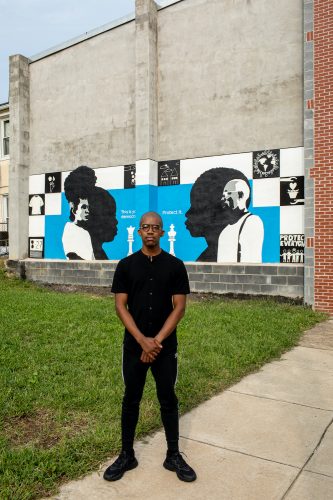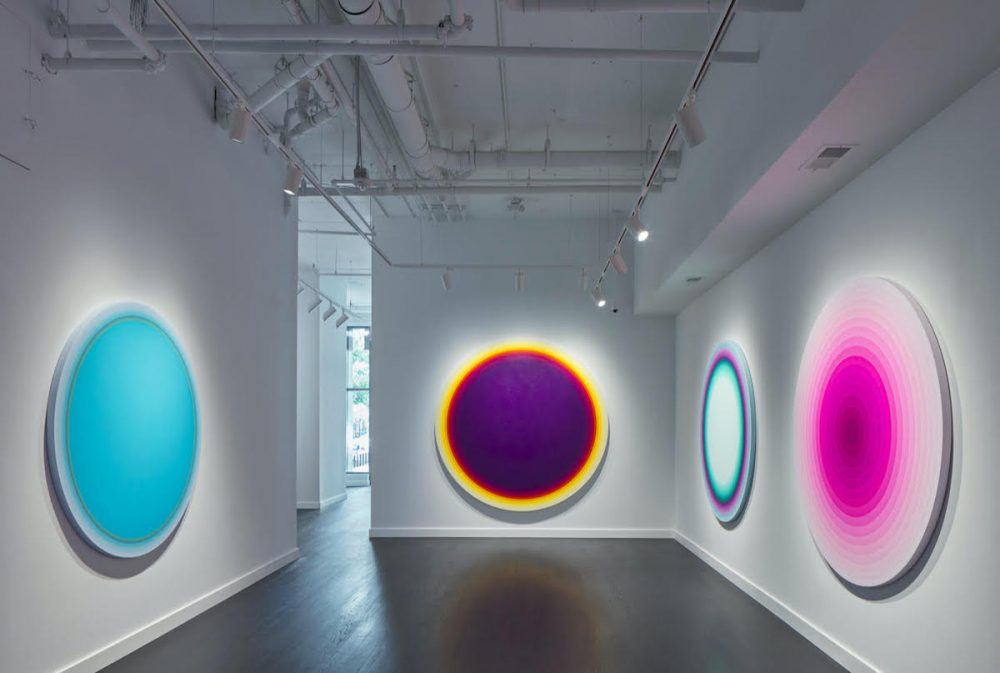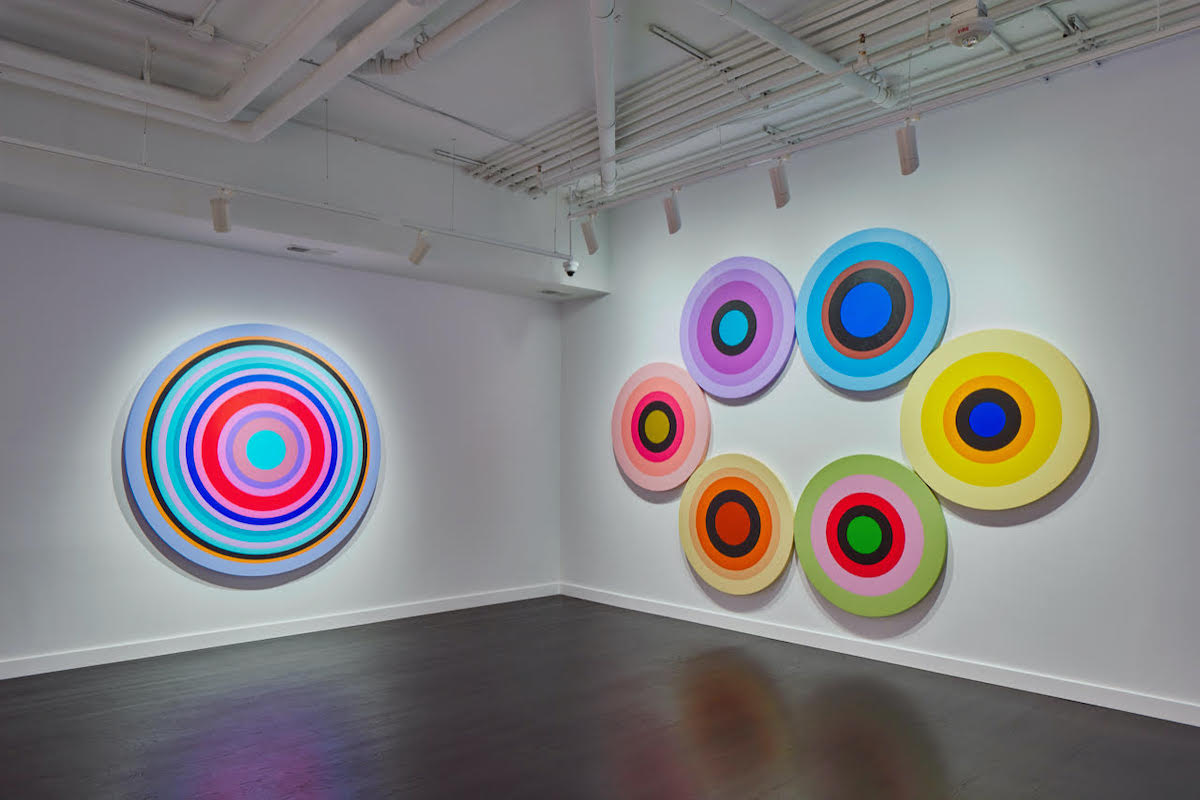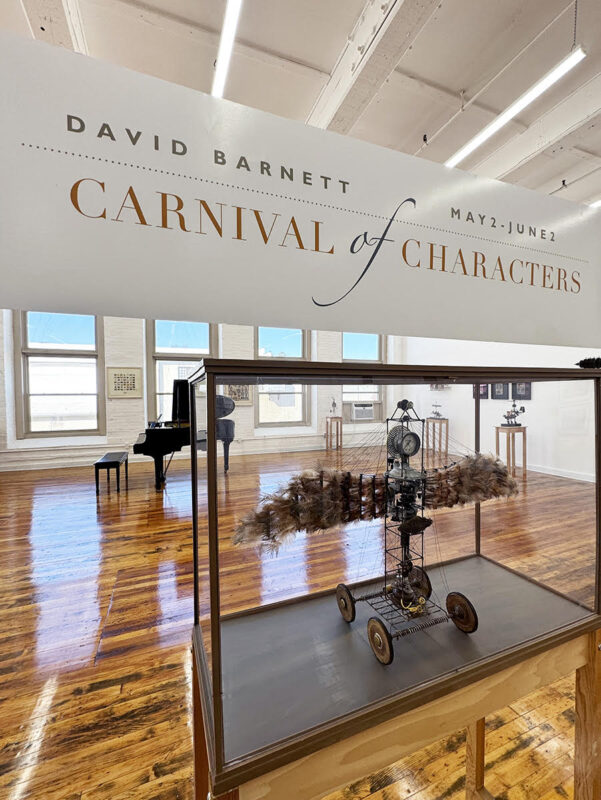“Our life is an apprenticeship to the truth that around every circle another can be drawn; that there is no end in nature, but every end is a beginning; that there is always another dawn risen on mid-noon, and under every deep a lower deep opens.” –Ralph Waldo Emerson (from the essay “Circles”)
Amid the disquieting and often tragic uncertainties of the coronavirus pandemic, along with the present climate of social injustice and the questionable state of our political landscape, one does not expect to encounter art that is altruistically and purely visual. It was refreshing, and also enlightening, to view the colorful abstract paintings of Linling Lu in her solo show, One Hundred Melodies of Solitude, at Hemphill Fine Arts in Washington, DC. What seemed at first to be formal abstractions expanded into spiritual, cultural, and personal visions.
This exhibition, which closed in August, offered a plethora of works, including a series of sumptuous, large-format circular paintings that comprised the heart of the show. Also presented were smaller tondos rather arbitrarily grouped on the wall in spacious ovoid configurations, as well as modular, toy-like block sculptures, an addendum to an otherwise focused show. Adding to this work were digital prints that coupled the artist’s concentricities of color with a didactic line-up of constituent colors. So much diverse work in one show, while indicative of Lu’s prolific creative output, risked being a distraction from the premiere works of this exhibition, but offered a subtext for the artist’s thought process.
Lu’s complex, anthropometric tondos, measuring about five to six feet in diameter, were the strongest works in this exhibition, urging a sentient, mesmerized viewer to align bodily with their magnetic, centrifugal power. They are arresting in their complexity, centering in their universal circularity, and they induce mandala-like, bodily meditation. Highly charged with radiating energy, these fields of immaculately painted spectral color bands are arranged variously with diverse widths, intervals, and interstices that accommodate the sphere of the human eye, as philosophized by Emerson in his essay on circularity.









